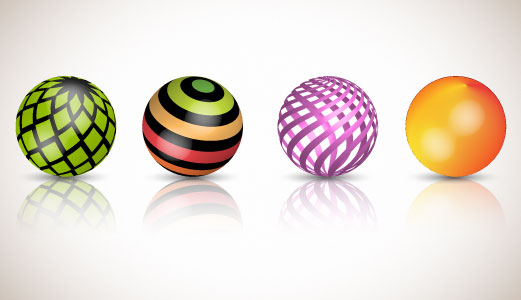| Appearance and Graphic Style Panels | |
|---|---|
| The appearance panel is one of the most useful editing tools in Illustrator. It allows you to add multiple effects to specific objects that can easily be deleted or modified. Applying effects in the appearance panel is “nondestructive” editing – meaning that the simple black line you originally drew is still essentially a simple black line and effects like drop shadows, shading, and color are applied in the appearance panel and therefore can be easily modified. The underlying structure of objects is maintained. | |
| Part of | Illustrator CS5 |
| Part Type | Interface |
| Screenshot |

|
Working with "appearances", which are groups of related attributes, in conjunction with saving these appearances as Graphic Styles is an effective way of organizing your Illustrator document.
STEPS
1. Working with the appearance panel – if you will be using the appearance panel often in any illustrator file it is helpful to place it in a useful location, like next to the layers panel. To do this click window -> appearance and slide it into the desired location.
2. Working with lines – The appearance panel allows you to layer effects onto lines, to create a specialty line that can be used throughout an Illustrator document. To create a line that has one or several offsets of a similar/different line first duplicate that line in the appearance panel of the specific object.
The new line will not show up at first because its location is directly behind the original line. Since you are in the appearance panel you will not move the new line with the arrow tool like you are used to. Rather, you will add a transform effect [fx] to the new line. Make sure the new line layer is selected when you add the transformation.
The specific transformation made to this line can always edited by clicking on the word “transform” on the layer that is applied to your stroke.
If you want this new type of line to be applied to any future lines click on the small arrow icon in the upper right corner of the appearance panel and uncheck “new art has basic appearance”
If you want to apply a specialty stroke to a stroke you have already created you need to move to the layers panel. Twirl open the layer that includes the specialty stroke and new stroke. You will notice that the strokes will applied effects will have a grey dot rather than an open hole on the right side of their layer. Holding down the alt key drag the grey ball up to the layer you want to change.
3. Working with fills
Applying color related pixilation – in the appearance panel for a selected object click on the effects icon [fx] pixilate -> pointillize. The size and spacing of colored dots can be adjusted.
Applying edge shadow and feathering – To create an edge shadow and feathering effect add an inner glow effects layer to object. [fx] -> stylize -> inner glow. Change the mode to “overlay” and be sure the color is darker then the color you are overlaying. You can preview all the changes you are making.
To create a feathering or soft edge effect [fx] -> stylize -> feather.
Note: The appearance panel is an extremely deep and complex part of Illustrator and this is just a very quick intro to a few things that are possible.





